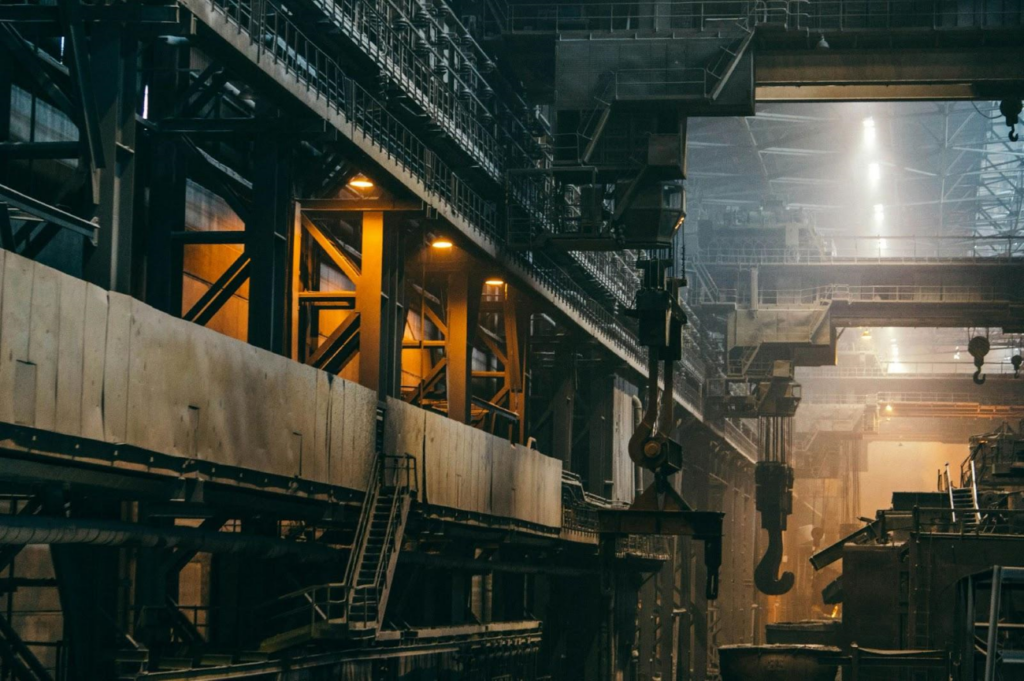High-pressure systems rely on components that must withstand significant forces while maintaining reliability. Steel flanges, essential for connecting pipes and equipment, are no exception. Their material should meet specific operational demands to help ensure safety and efficiency. Let’s break down the critical considerations and material options for high-pressure systems, focusing on practical insights and industry-specific factors.
Steel Flanges and Their Function in High-Pressure Systems
Steel flanges act as connectors within piping systems, enabling secure joints between pipes, valves, and other components. Widely used in industrial applications, steel flanges aim to balance strength, durability, and compatibility with demanding operating conditions. Failure to choose the correct material may result in issues such as leaks, premature wear, or system breakdowns.
Applications for high-pressure steel flanges are common in industries like oil and gas, power generation, and chemical processing. These settings often require materials that balance strength, durability, and compatibility with operating conditions.
Factors to Consider When Choosing Steel Flange Materials
Selecting the right flange material involves several technical considerations. The decision should align with the specific requirements of the system and its environment.
Pressure and Temperature Ratings
Each flange material has a range of pressures and temperatures it can tolerate. For example:
- Carbon steel is suitable for moderate pressures and temperatures but may not perform well in extremes.
- Stainless steel performs reliably under high temperatures and pressure.
- Alloy steels, such as chrome-moly, are designed for the most demanding applications, where both heat and pressure exceed typical levels.
Using materials that exceed the system’s maximum pressure or temperature can provide an added safety margin but may unnecessarily increase costs.
Corrosion Resistance
The operating environment significantly impacts flange material selection. Corrosive environments, such as those involving saltwater or acidic chemicals, require materials with high resistance to degradation:
- Stainless steel grades, like 316, offer strong resistance to general corrosion and chlorides.
- Duplex stainless steels provide enhanced resistance to pitting and stress corrosion compared to standard grades.
- Nickel alloys, though more expensive, handle highly aggressive chemicals effectively in extreme environments.
Corrosion may weaken flanges over time, potentially leading to leaks or failures. Ensuring the material matches the environmental challenges is critical for durability.
Fluid Compatibility
The fluid being transported influences the material choice. Systems carrying hydrocarbons, for instance, may require flanges that resist hydrogen sulfide corrosion. For systems with clean water or steam, simpler materials like carbon steel may suffice. Matching the material with the fluid helps prevent chemical reactions that could degrade the flange or contaminate the system.
Mechanical Strength
Flanges in high-pressure systems must handle forces from internal pressure, external loads, and thermal expansion. Alloy steels, known for their strength-to-weight ratio, are often preferred in situations where higher mechanical stress is anticipated.
Regulatory Standards
Steel flange materials should comply with industry standards, such as ASME or ASTM specifications. These standards help ensure the material has been tested and certified for specific applications, reducing the likelihood of failures. Standards also simplify material selection by providing clear benchmarks for performance.

Economic and Operational Factors
While performance is critical, budget considerations should not be ignored. Exotic materials, like nickel alloys, offer unmatched performance in niche applications but can be prohibitively expensive for routine use. Balancing upfront costs with long-term maintenance and replacement expenses often provides a more sustainable solution.
Common Flange Material Options
Here’s a closer look at the most commonly used steel flange materials and their properties:
Carbon Steel
- Strength: Economical and effective for moderate systems.
- Drawback: Lacks corrosion resistance, which limits its application in humid or saline environments.
- Applications: Industrial piping for non-corrosive fluids, HVAC systems, and basic utility lines.
Stainless Steel
- Strength: Resistant to corrosion and offers good durability.
- Drawback: Higher cost compared to carbon steel.
- Applications: Used in systems exposed to moisture, chemicals, or temperature fluctuations, such as food processing and marine applications.
Alloy Steel
- Strength: Superior performance under extreme pressure and temperature.
- Drawback: More careful handling is required during manufacturing due to specific alloy compositions.
- Applications: Ideal for power plants, high-pressure steam systems, and petrochemical facilities.
Duplex Stainless Steel
- Strength: Combines the toughness of carbon steel with the corrosion resistance of stainless steel.
- Drawback: It can be more expensive than regular stainless steel and challenging to source.
- Applications: Offshore rigs, chemical processing plants, and environments with chloride exposure.
Nickel Alloys
- Strength: Exceptional resistance to corrosion and high temperatures.
- Drawback: High cost and limited availability.
- Applications: Specialized uses such as chemical reactors and aerospace systems.
Steps for Choosing the Right Material
Analyze System Requirements
Define the operational pressure, temperature, and fluid characteristics. For example, a system carrying steam at 600°F may require a different material than one handling chilled water.
Evaluate Environmental Conditions
Consider external factors like salinity, humidity, or chemical exposure. Flanges exposed to saltwater spray, such as in coastal installations, are likely to benefit from materials like duplex stainless steel to resist corrosion.
Consult Standards
Review relevant industry standards and ensure materials meet regulatory guidelines. This can help minimize liability and provide confidence that the flange can handle expected loads.
Weigh Cost vs. Performance
Assess whether the system justifies the expense of premium materials. In cases where maintenance costs outweigh initial savings, higher-performance materials might offer better value in the long run.
Seek Expert Guidance
If uncertainties remain, consult with engineers or material specialists. Their expertise can address knowledge gaps and help avoid costly mistakes.
Strategy Over Simplicity
Selecting the right steel flange material is not just a matter of ticking boxes for pressure, temperature, and corrosion resistance. It’s a strategic decision that considers system longevity, maintenance cycles, and the cost-benefit balance. Choosing an appropriate material upfront may reduce operational risks, enhance safety, and improve system efficiency.
Every project has unique demands. The best outcomes come from understanding these needs, consulting experts when necessary, and prioritizing long-term value over short-term savings.
Published by Nicholas A.



















